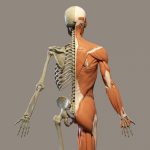 Kinesiology, is the scientific study of human or non-human body movement. Kinesiology addresses physiological, biomechanical, and psychological dynamic principles and mechanisms of movement. Applications of kinesiology to human health include biomechanics and orthopedics; strength and conditioning; sport psychology; methods of rehabilitation, such as physical and occupational therapy; and sport and exercise. (1)
Kinesiology, is the scientific study of human or non-human body movement. Kinesiology addresses physiological, biomechanical, and psychological dynamic principles and mechanisms of movement. Applications of kinesiology to human health include biomechanics and orthopedics; strength and conditioning; sport psychology; methods of rehabilitation, such as physical and occupational therapy; and sport and exercise. (1)
The word comes from the Greek κίνησις kínēsis, “movement” (itself from κινεῖν kineîn, “to move”), and -λογία –logia, “study”. (1)
The Study of Movement (2)
Kinesiology uses something like a roadmap of the human body to navigate around the muscles, tendons, ligaments, and bones. A massage therapist with awareness of how these systems operate can provide effective, safe massage to elderly patients, professional athletes, weekend warriors, and even small children.
Ligaments tie bones together. Tendons anchor muscles to bones. Neither ligaments nor tendons can heal on their own, so kinesiology and massage therapy work on the remaining tissue group, the muscles, to provide support and relief.
Muscles either stretch or contract. Kinesiology takes advantage of this to provide exercise and stimulation to balance one muscle’s stretch with another’s contraction. The typical Charley Horse is a painful, uncontrolled muscle contraction. The muscle spasm can be in any muscle but often is in the gastrocnemius, or large calf muscle.
Massage Therapy and Kinesiology (2)
Amateurs know gently rubbing the gastrocnemius in the midst of a night-shattering muscle cramp can help the muscle to relax. Massage therapists with knowledge of kinesiology can work any muscle group to aid relaxation, loosen contracted muscles, and soothe an overworked body.
Kinesiology focuses on three muscle movements:
- Isometric—muscle tension and muscle length remain constant
- Isotonic—muscle tension remains constant and muscle length varies
- Isokinetic—both muscle tension and muscle length vary
The Body’s Muscles (2)
Kinesiology and applied kinesiology study muscles and their interaction with the body. As anyone who has suffered even a slight foot or leg injury can tell you, the smallest weakness or pain in one muscle telegraphs throughout the body, making daily activities difficult. Kinesiology studies muscles separately and in groups, with a goal of understanding how the various muscles help movement, improve posture, allow circulation, and affect mood.
Two types of muscles the kinesiologist and massage therapist will never work on are visceral muscles (inside organs) and cardiac muscles (inside the heart). The remaining muscle type, skeletal, is the primary focus of kinesiology.
The human body has some 700 named muscles, but the massage therapist concentrates on large groups:
- Shoulder girdle—The trapezius, pectoralis minor and others
- Shoulder joint—The pectoralis major, latissimus dorsi and others
- Elbow joint and arm muscles—The triceps brachii, supinator and others
- Wrist and hand muscles—Both flexors and extensors that allow for the exquisite control and strength of the human hand
- Knee joint muscles—Vastus lateralis, popliteus and others
- Muscles of the hip and pelvis—Sixteen muscles including the gluteus minimus, medius and the renowned gluteus maximus
- Lower Leg muscles—Besides the aforementioned gastrocnemius, the leg muscles include eight others
- Neck and back muscles—Internal and external obliques and six more.
(1) https://en.wikipedia.org/wiki/Kinesiology)
(2) https://www.ecpi.edu/blog/what-is-kinesiology-and-what-does-it-have-to-do-with-massage-therapy)
